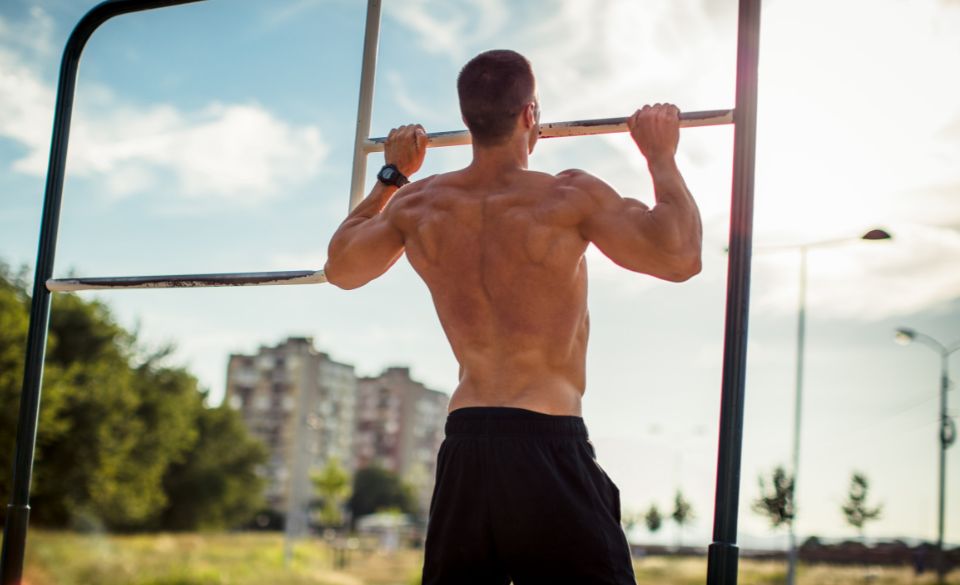
How to Get Better at Pull Ups: Tips and Techniques
Page Contents
Pull ups are a great way to build upper body strength and improve your overall fitness. However, they can also be challenging, especially if you’re just starting out. Fortunately, there are a number of tips and techniques that can help you improve your pull up performance and work towards more advanced variations. In this article, we’ll explore some of the best ways to get better at pull ups.
Focus on Form
Proper form is essential when it comes to doing pull ups. Without good form, you could put yourself at risk for injury and not get the full benefit of the exercise. Here are some tips to help you perfect your pull up form:
1. Grip: Make sure your grip is shoulder-width apart or slightly wider. Your palms should be facing away from your body with your fingers gripping the bar tightly.
2. Hanging position: Start by hanging from the bar with your arms fully extended. Your shoulders should be pulled down and back, with your shoulder blades engaged.
3. Core engagement: To maintain stability and prevent swinging, engage your core muscles by pulling your belly button towards your spine.
4. Pulling: Initiate the pull by engaging your back muscles and pulling your shoulder blades down and back. Pull yourself up until your chin is above the bar.
5. Lowering: Slowly lower yourself back down to the starting position, maintaining control and engaging your back and core muscles.
Remember to breathe throughout the exercise, inhaling as you pull yourself up and exhaling as you lower yourself down. It may take some practice to perfect your form, but taking the time to do so will make your pull ups more effective and less risky.
By focusing on proper form, you can also avoid common mistakes such as using momentum or relying too much on your arms rather than engaging your back muscles. Additionally, good form can help you achieve more reps and increase your overall strength and endurance.
Gradually Increase Volume and Intensity
When it comes to getting better at pull ups, gradually increasing volume and intensity is key. This means slowly increasing the number of pull ups you do and making the exercise more challenging over time.
Start by setting a goal for how many pull ups you want to be able to do. If you’re currently only able to do one or two, don’t try to jump straight to ten. Instead, focus on adding one or two reps to your set each week until you reach your desired number.
In addition to increasing volume, it’s also important to gradually increase intensity. This can be done by incorporating variations of the pull up, such as wide grip pull ups, chin ups, or weighted pull ups. These variations will challenge your muscles in new ways and help you build more strength.
Another way to increase intensity is to decrease rest time between sets. Start by resting for 2-3 minutes between sets and gradually decrease this time to 1-2 minutes or less.
It’s important to remember that progress takes time and consistency. Don’t get discouraged if you don’t see results right away. Keep pushing yourself, but also listen to your body and avoid overtraining or injuring yourself.
Overall, gradually increasing volume and intensity is a safe and effective way to get better at pull ups. By challenging your muscles in new ways and slowly building up your strength, you’ll be able to achieve your pull up goals in no time.
Incorporate Accessory Exercises
If you want to get better at pull ups, it’s important to not only focus on the pull up itself but also incorporate accessory exercises that target the muscles involved in the exercise. Accessory exercises can help you build more strength and improve your form, which will in turn help you perform better during pull ups.
One important muscle group to target is the back muscles, which are heavily involved in the pull up. Exercises such as rows, lat pull downs, and bent over barbell rows can help you strengthen your back muscles and improve your pull up form.
Another muscle group to target is the biceps, which are also heavily involved in the pull up. Bicep curls, chin ups, and hammer curls can all help you build more strength in your biceps, which will make it easier for you to pull yourself up during a pull up.
Core exercises are also important for pull up performance, as they help you maintain proper form and stability during the exercise. Planks, Russian twists, and hanging leg raises are all effective core exercises to incorporate into your routine.
It’s important to note that while accessory exercises can be beneficial, they should not be used as a replacement for practicing actual pull ups. Make sure to still incorporate pull ups into your routine and gradually increase volume and intensity as you get stronger.
Stay Consistent and Patient
Finally, it’s important to remember that getting better at pull ups takes time and consistency. Don’t expect to see results overnight, but rather focus on making gradual progress over time. By staying patient and consistent with your workouts, you’ll be able to build the strength and technique needed to master the pull up.
In conclusion, pull ups are a challenging but rewarding exercise that can help to build upper body strength and improve overall fitness. By focusing on proper form, gradually increasing volume and intensity, incorporating accessory exercises, and staying patient and consistent, you can work towards improving your pull up performance and reaching your fitness goals.


